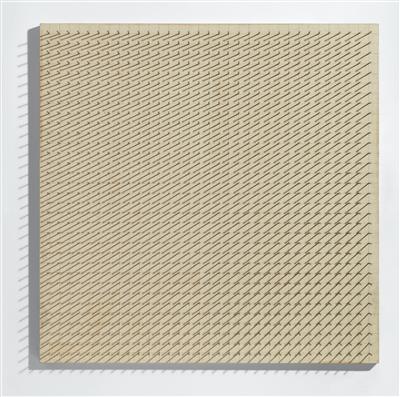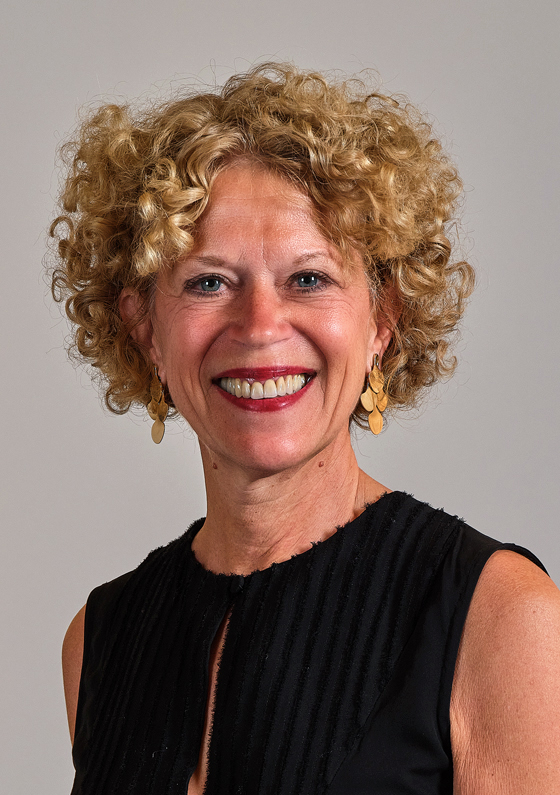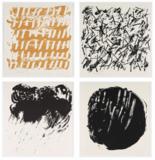Günther Uecker *

(born in Wendorf in 1930)
Reihung, 1970, titled, signed, dated, inscribed on the reverse Uecker 70, HAUT OBEN, and with directional arrow, nails, graphite on canvas on wood, 102.5 x 102.5 x 9 cm
Provenance:
Private Collection, Düsseldorf – directly from the artist
This work is registered in the Uecker Archiv under the number GU.70.104 and will be noted for inclusion in the forthcoming
Uecker Catalogue Raisonné.
“My attempt to activate a real space through structuring rows, to allow the
observer to experience it as a condition of pure objective aesthetics, leads me to new design materials. When I use nails as structural elements
I don’t want them to be understood as nails. What I’m trying to do is to create vibrations by using these materials in an ordered relationship to one another, one that disturbs the geometric order and may even irritate.”
Die Schönheit der Bewegung, 1961, in Günther Uecker, Schriften, 1979, p. 105
To render the development of a movement visible as a dynamic state is a
significant action. It is not a matter of routine but fertile in its repetition,
in its very monotony, like the experience of prayer.
My objects constitute a spatial reality, a zone of light.
I use the means of technology to overcome the personal gesture,
to objectify, to create the conditions for freedom.
Günther Uecker, in: ZERO 3, Düsseldorf 1961; Reprint ZERO 1-3, Heinz Mack und Otto Piene,
Cologne 1973, p. 220
The works of Günther Uecker from 1970 convey more clearly than those of the other artists from his close circle the awareness of a radical change between the 1960s and the 1970s. Already in 1970, Günther Uecker was the only one to take a stance against the formalism of the 1960s, a stance which declared art to be a field of free, human activity. The goal was not the work of art in itself, but rather the acting, self-realising artist. The newly won freedom from formal or visual constraints also clearly manifested itself in the spontaneously agitated fields of nails and nail-objects which were created after 1970.
The “Reihung” (“alignment”) is one of the numerous ideas of this period which Günther Uecker realised; his endeavour was successful, and he in no way went over the already developed basic forms only to vary them, but instead he introduced completely new and fresh impulses into his work. The realisation of his ideas demanded a lot from Günther Uecker, and in his friends he found active supporters, not only with regard to the solution of technical problems but also in their artisanal execution.
The “Reihung” is a work which was constructed with the greatest attention to detail. Günther Uecker applies a geometric linear grid to the white-painted canvas; at the grid’s intersections, 1089 nails of completely identical length are hammered in. Günther Uecker uses the nail to mark a spot between the polarised principles of light and shade which represent permanent healing, re-creation and purity, as well as destruction, death and darkness. Günther Uecker’s nail reliefs directly and genuinely reflect the energetic reality of light and the four elements, along with the kinetic reality of movement. The work’s intensity changes with the light striking the 1089 nails and is affected by the viewer’s position.
The long shadows of the nails expand the work into a constantly changing, three-dimensional object. The relief turns into a concrete image space; it fills the space with its boundaries becoming less and less clearly defined. The structure of the work is rendered independent as a result of the various ways that light can hit the image medium. The real relation between space and the relief is only created by the viewer who, according to Günther Uecker, is supposed to complete the work themselves.
The exact, rhythmic alternation of nails and open areas structures the entire image surface down to the last detail, whereby, according to the incidence of light and the position of the viewer, new perspectives are constantly opened up, which seemingly cause the picture to vibrate, although in fact everything remains static.
Specialist: Dr. Petra Maria Schäpers
 Dr. Petra Maria Schäpers
Dr. Petra Maria Schäpers
petra.schaepers@dorotheum.de
05.06.2019 - 17:00
- Estimate:
-
EUR 400,000.- to EUR 600,000.-
Günther Uecker *
(born in Wendorf in 1930)
Reihung, 1970, titled, signed, dated, inscribed on the reverse Uecker 70, HAUT OBEN, and with directional arrow, nails, graphite on canvas on wood, 102.5 x 102.5 x 9 cm
Provenance:
Private Collection, Düsseldorf – directly from the artist
This work is registered in the Uecker Archiv under the number GU.70.104 and will be noted for inclusion in the forthcoming
Uecker Catalogue Raisonné.
“My attempt to activate a real space through structuring rows, to allow the
observer to experience it as a condition of pure objective aesthetics, leads me to new design materials. When I use nails as structural elements
I don’t want them to be understood as nails. What I’m trying to do is to create vibrations by using these materials in an ordered relationship to one another, one that disturbs the geometric order and may even irritate.”
Die Schönheit der Bewegung, 1961, in Günther Uecker, Schriften, 1979, p. 105
To render the development of a movement visible as a dynamic state is a
significant action. It is not a matter of routine but fertile in its repetition,
in its very monotony, like the experience of prayer.
My objects constitute a spatial reality, a zone of light.
I use the means of technology to overcome the personal gesture,
to objectify, to create the conditions for freedom.
Günther Uecker, in: ZERO 3, Düsseldorf 1961; Reprint ZERO 1-3, Heinz Mack und Otto Piene,
Cologne 1973, p. 220
The works of Günther Uecker from 1970 convey more clearly than those of the other artists from his close circle the awareness of a radical change between the 1960s and the 1970s. Already in 1970, Günther Uecker was the only one to take a stance against the formalism of the 1960s, a stance which declared art to be a field of free, human activity. The goal was not the work of art in itself, but rather the acting, self-realising artist. The newly won freedom from formal or visual constraints also clearly manifested itself in the spontaneously agitated fields of nails and nail-objects which were created after 1970.
The “Reihung” (“alignment”) is one of the numerous ideas of this period which Günther Uecker realised; his endeavour was successful, and he in no way went over the already developed basic forms only to vary them, but instead he introduced completely new and fresh impulses into his work. The realisation of his ideas demanded a lot from Günther Uecker, and in his friends he found active supporters, not only with regard to the solution of technical problems but also in their artisanal execution.
The “Reihung” is a work which was constructed with the greatest attention to detail. Günther Uecker applies a geometric linear grid to the white-painted canvas; at the grid’s intersections, 1089 nails of completely identical length are hammered in. Günther Uecker uses the nail to mark a spot between the polarised principles of light and shade which represent permanent healing, re-creation and purity, as well as destruction, death and darkness. Günther Uecker’s nail reliefs directly and genuinely reflect the energetic reality of light and the four elements, along with the kinetic reality of movement. The work’s intensity changes with the light striking the 1089 nails and is affected by the viewer’s position.
The long shadows of the nails expand the work into a constantly changing, three-dimensional object. The relief turns into a concrete image space; it fills the space with its boundaries becoming less and less clearly defined. The structure of the work is rendered independent as a result of the various ways that light can hit the image medium. The real relation between space and the relief is only created by the viewer who, according to Günther Uecker, is supposed to complete the work themselves.
The exact, rhythmic alternation of nails and open areas structures the entire image surface down to the last detail, whereby, according to the incidence of light and the position of the viewer, new perspectives are constantly opened up, which seemingly cause the picture to vibrate, although in fact everything remains static.
Specialist: Dr. Petra Maria Schäpers
 Dr. Petra Maria Schäpers
Dr. Petra Maria Schäpers
petra.schaepers@dorotheum.de
|
Buyers hotline
Mon.-Fri.: 10.00am - 5.00pm
kundendienst@dorotheum.at +43 1 515 60 200 |
| Auction: | Post-War and Contemporary Art I |
| Auction type: | Saleroom auction |
| Date: | 05.06.2019 - 17:00 |
| Location: | Vienna | Palais Dorotheum |
| Exhibition: | 25.05. - 05.06.2019 |
More objects by this artist
-

Estimate:
EUR 1,500.- to EUR 2,000.-
